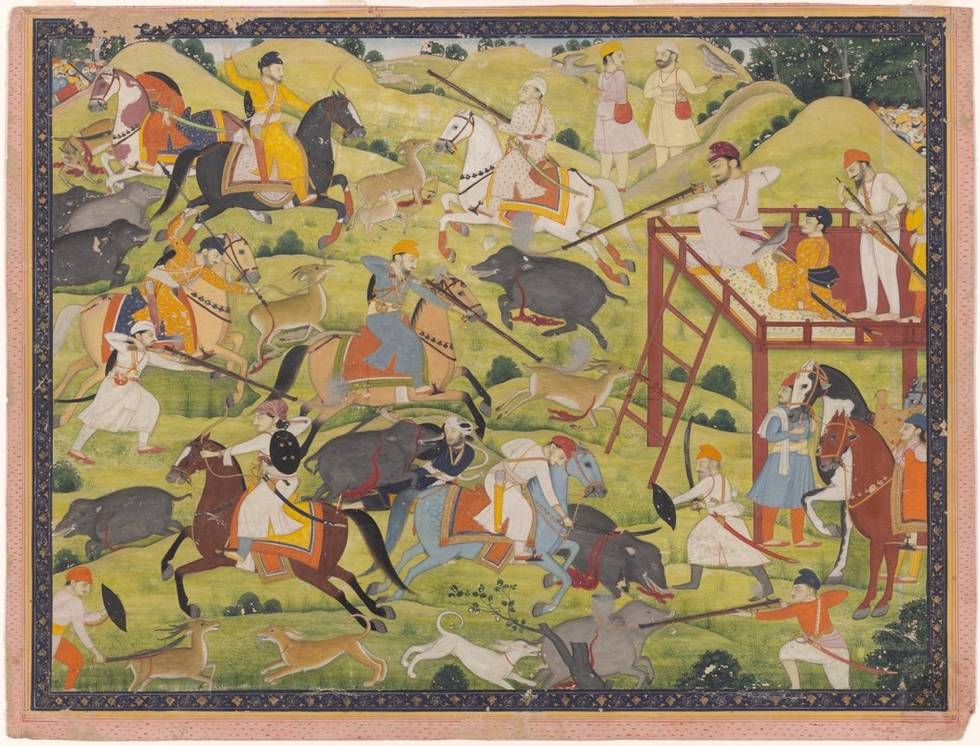Location: Lahore, Punjab
Date: early 19th century
Materials: Wood, velvet, leather, gold, iron, lacquer and cord
Measurements: 17.5 x 17 cm
Inv No: OA2097
While the shape of this powder flask closely resembles other examples produced in Lahore, it is unusual due to its pierced gold floral designs, in place of the more typical embroidery. The golden teardrop-shaped pattern with its curved upper end is reminiscent of the boteh motif commonly seen in Kashmir shawls and, from the 19th century in Europe, in paisley-patterned textiles.

The purpose of the flask was to store gunpowder, making it an essential accessory for the use of firearms. It would have been worn around the waist and its accompanying belt with bullet pouches may possibly be OA1625, which is similarly fashioned in green velvet and gold fittings.
The flask itself is topped with a gilded tiger-head finial, suggestive of its use in the hunt. Matchlock guns – a favoured weapon in big-game hunting– were often also decorated with tiger designs. The hunt was an important way in which rulers demonstrated their dominance over the land and showcased their bravery and martial abilities, key qualities for any leader. The importance of the hunt in Punjab is attested to by paintings held in the Victorian and Albert Museum (IS.196-1951) and the Museum of Asian Art, San Francisco (1998.68), which both depict Sikh rulers hunting, equipped with matchlock muskets and powder flasks.

In 1855, a major sale of arms and armour belonging to Jean-Baptiste Ventura (1794-1858), one of Ranjit Singh’s (1780-1839) former Napoleonic generals, took place in Paris. Lot 44 from that sale lists a horn-shaped green velvet powder flask, decorated in gold.
A comparable powder flask bearing a silver lion’s head finial is in the collection of the Royal Armouries ( XXVIF.193) and was presented by a descendent of Henry Hardinge (1785-1856), governor-general of India during the First Anglo-Sikh war.